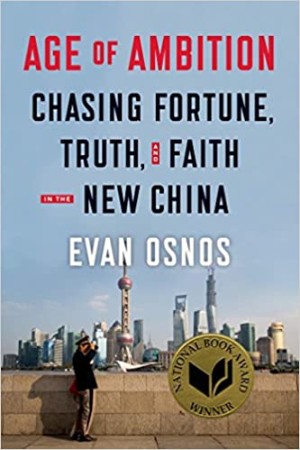Believing China?
By Neil Earle

On October 1, 2012 I heard the then newly-installed Dean of Multicultural Studies at Fuller Theological Seminary at Pasadena, California, speak on one of the astounding surprises to come out of that surprising country of China. “What we used to cal Red China may eventually have to be renamed Believing China,” said Scott Sunquist.
The Dean was commenting on a trend that few Westerners have noticed but was reported on in the August 18, 2008 Canadian newsmagazine Maclean’s. In an article titled “Go Forth and Pray, Comrade,” Paul Webster commented on what he called “History’s largest religious revival.”
Historical Firsts
For a Canadian periodical not given to excess, that was an astonishing statement but facts were offered to back up the claim. For one thing Buddhism is enjoying a revival in the People’s Republic. According to Master Jue Xing, religion went underground after the horrific Red Purges of the 1960s and only with the new orientation of China to the West has religion been given the green light. Master Jue runs Shangai’s Jade Buddha Temple and estimates some 400,000,000 practicing Buddhists across the country, with 1 billion sympathizers.
But, said Maclean’s back then, “Christianity too is booming, with an estimated one million new followers joining congregations annually. More Protestants attend church on Sundays in China than in Western Europe.” Chinese expert James Miller at Ontario’s respected Queen’s University added: “Seen just by the numbers, China’s religious reawakening can be called the largest religious resurgence in human history. This is completely unprecedented.”
Mind you, determined Christians did survive the years of the almost fanatical Communist decades stretching from the 1940s to the 1980s. There was always an official Christian church permitted by the government and by the 1990s mission scholars were tracking about 20-25, 000,000 Chinese in house churches scattered across the country. Evan Osnos in his highly-praised 2014 report on China titled Age of Ambition: Chasing Fortune, Truth and Faith in the New China claims 60-80 million Christians in the People’s Republic. As far back as 2008 the Chinese President listed among the nation’s top five priorities “managing the religious resurgence.”
 Festival 1985 with the Little Ambassadors of Shanghai
Festival 1985 with the Little Ambassadors of ShanghaiThough officially atheist and Communist still, the practical men in Beijing see the value of tolerating a Christian presence in their vast country. Internally, “there is a crisis of belief in China,” said Miller, “People used to believe in Communism but that isn’t the case anymore. People are looking for alternatives. Religion is one of these.”
“A Little Child Shall Lead”
Politics matters here. Tolerating religion can showcase China’s new face towards the rest of the world. Though missionary activity is still restricted in China, the contact between diverse religious groups can obviously enhance Beijing’s image for its foreign policy purposes. “Soft power” factors such as culture and religion can sometimes move mountains. President Richard Nixon’s dramatic and now greatly significant opening to China in 1972 began with a ping-pong match. Where diplomats go, spiritual ambassadors may follow. In 1984 and 1986 some close friends of mine participated in a cultural exchange between what were known as the Little Ambassadors of Shanghai under the sponsorship of an American-based cultural/humanitarian foundation and Chinese executives such as Tan Zhan-Lin, a former close associate of Chairman Mao himself.
Pasadena, California at the time became the jumping off spot for American youngsters and those superbly trained and talented kids from China to thrive and interact. Chinese and American youth forged close ties on and off stage even as the Little Ambassadors were outward bound to San Francisco (Shanghai’s sister city) and a White House performance and meeting with First Lady Nancy Reagan.
Activities such as these have continued from many churches and strengthened the once-fragile ties that bound Western Christians to their newly-discovered brethren in the People’s Republic. And all this is in line with the international Commission Jesus gave his people centuries ago that “repentance and forgiveness of sins should be proclaimed in his name among all nations” (Luke 24:47). This is the ultimate good news message. The Gospel is as much “caught as taught,” missionaries know.
 One quarter of the world’s people cannot lightly be ignored.
One quarter of the world’s people cannot lightly be ignored.Now of course Christians have to be careful how they go about all this. The injunction to be “as wise as a serpents and as harmless as doves” comes to mind – but, for sometimes despairing North American believers facing attendance declines and growing skepticism and doubt, the resurgence in China should be a strong encouragement. The Master Parable of the Sower is being fulfilled!
The Mysterious Seed!
Christians know this: Ultimately nothing can stop the impetus and impact of the movement Jesus started back in the First Century with twelve ordinary men. He told us it would be that way. “The kingdom of God is as if a man should scatter seed on the ground. He sleeps and rises night and day, and the seed sprouts and grows, he knows not how. The earth produces by itself, first the blade, then the ear, then the full grain in the ear” (Mark 4:26-27).
Though the complexities are many and this article is more of an update than an exhaustive study, the evidence seems clear that there has been is a prosperous spiritual harvest shaping up in China and … perhaps there always has been. The seed grew, no man knew how.
Thanks be to God!